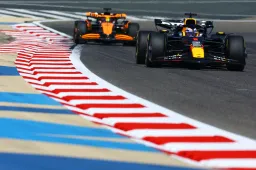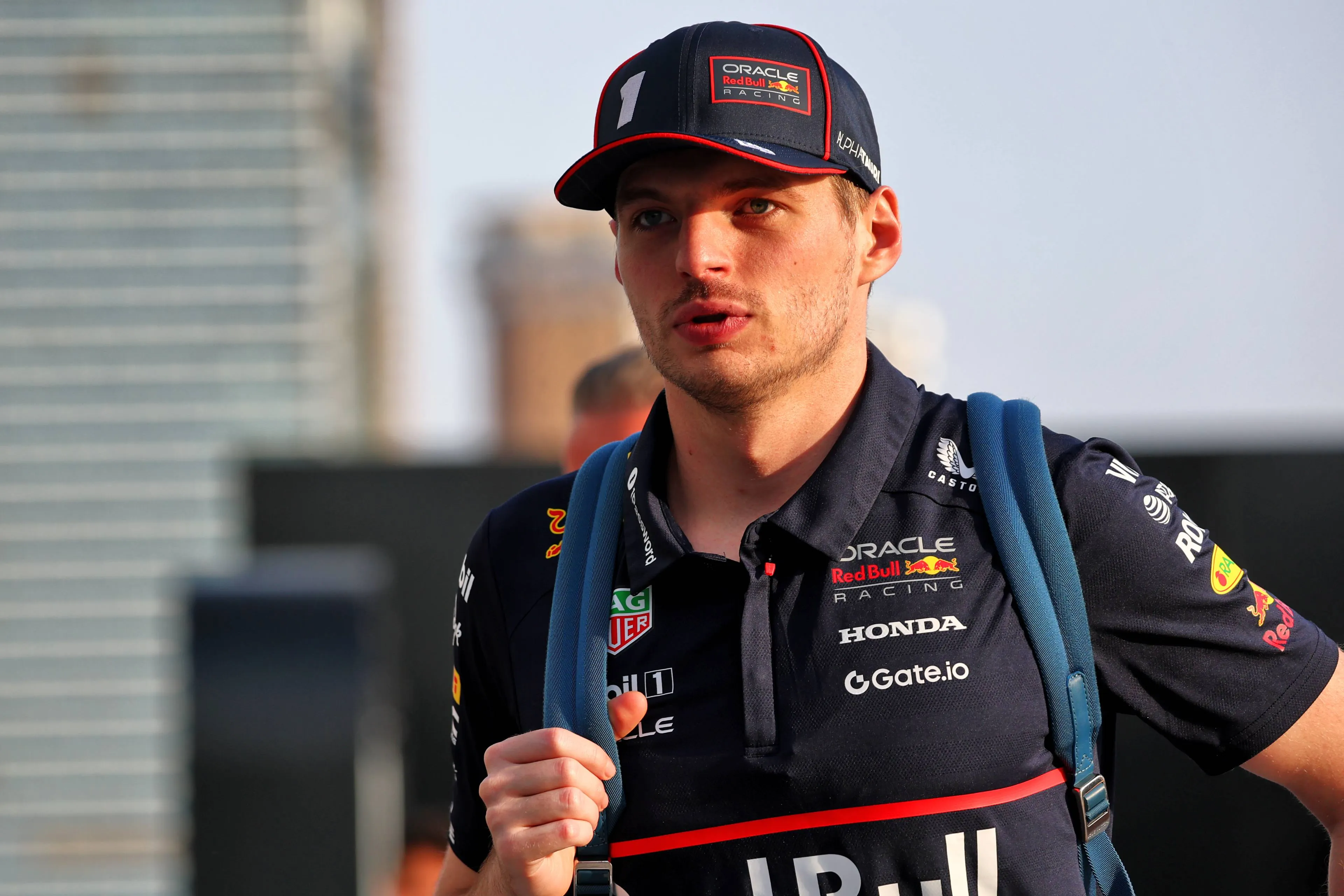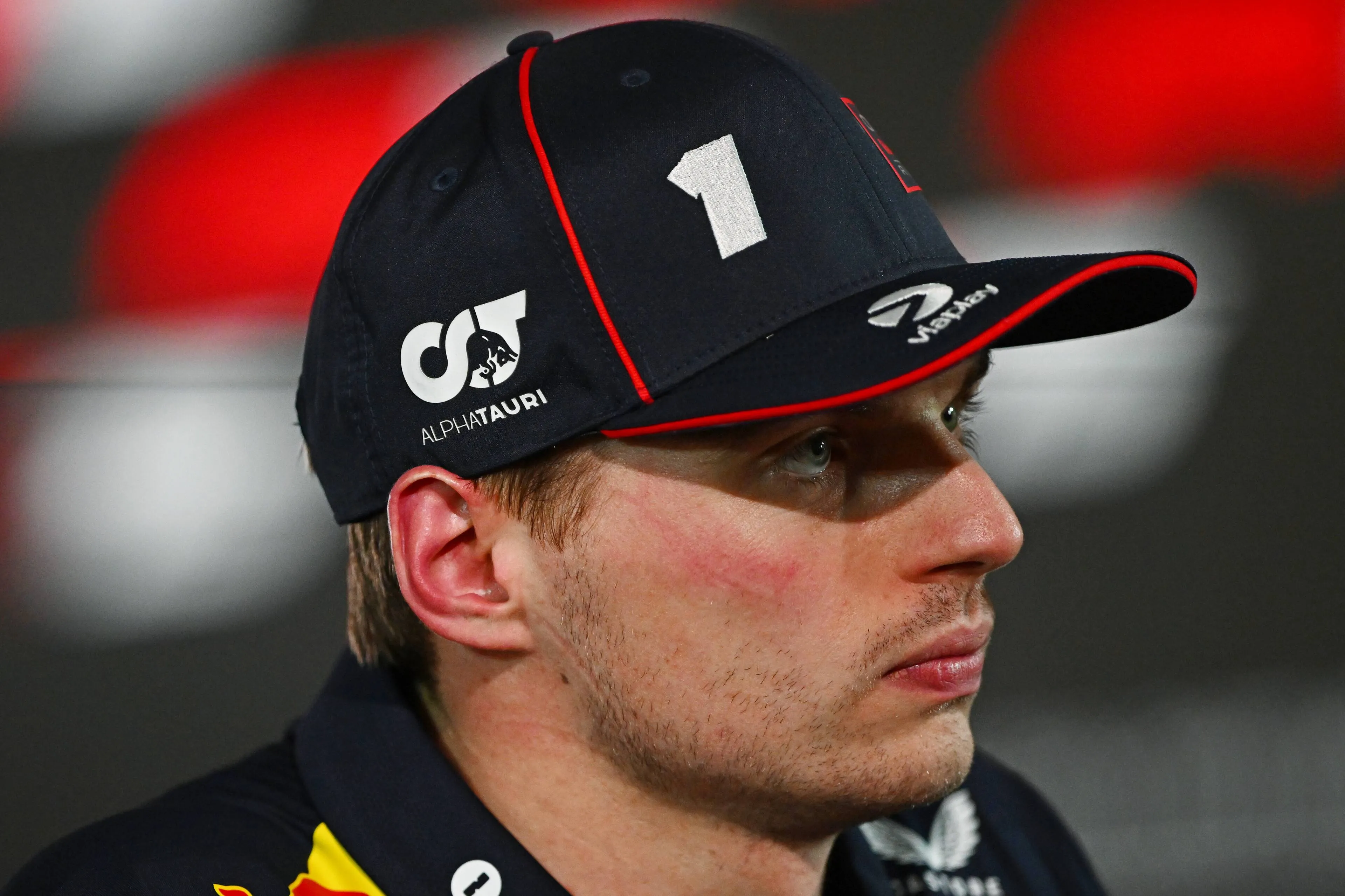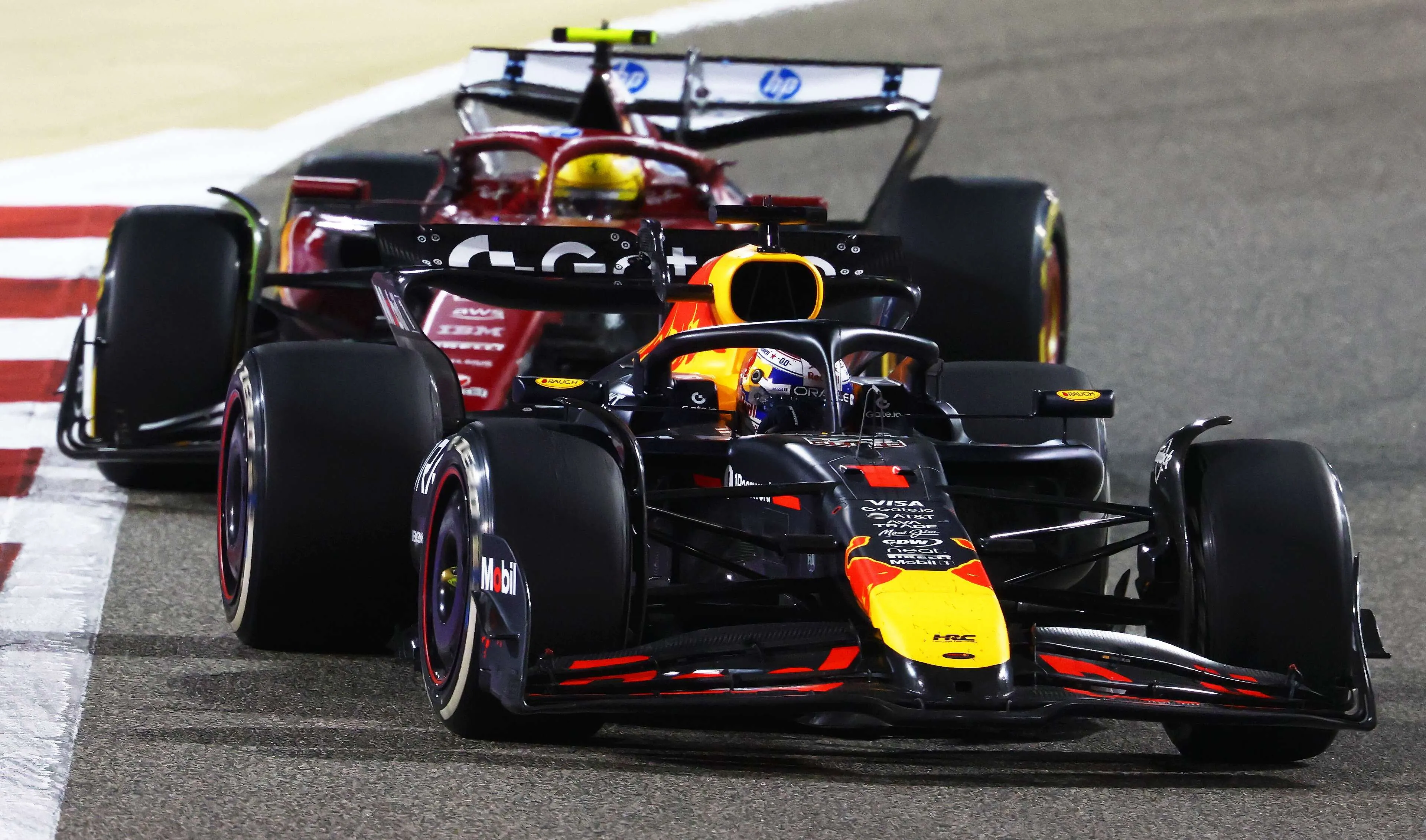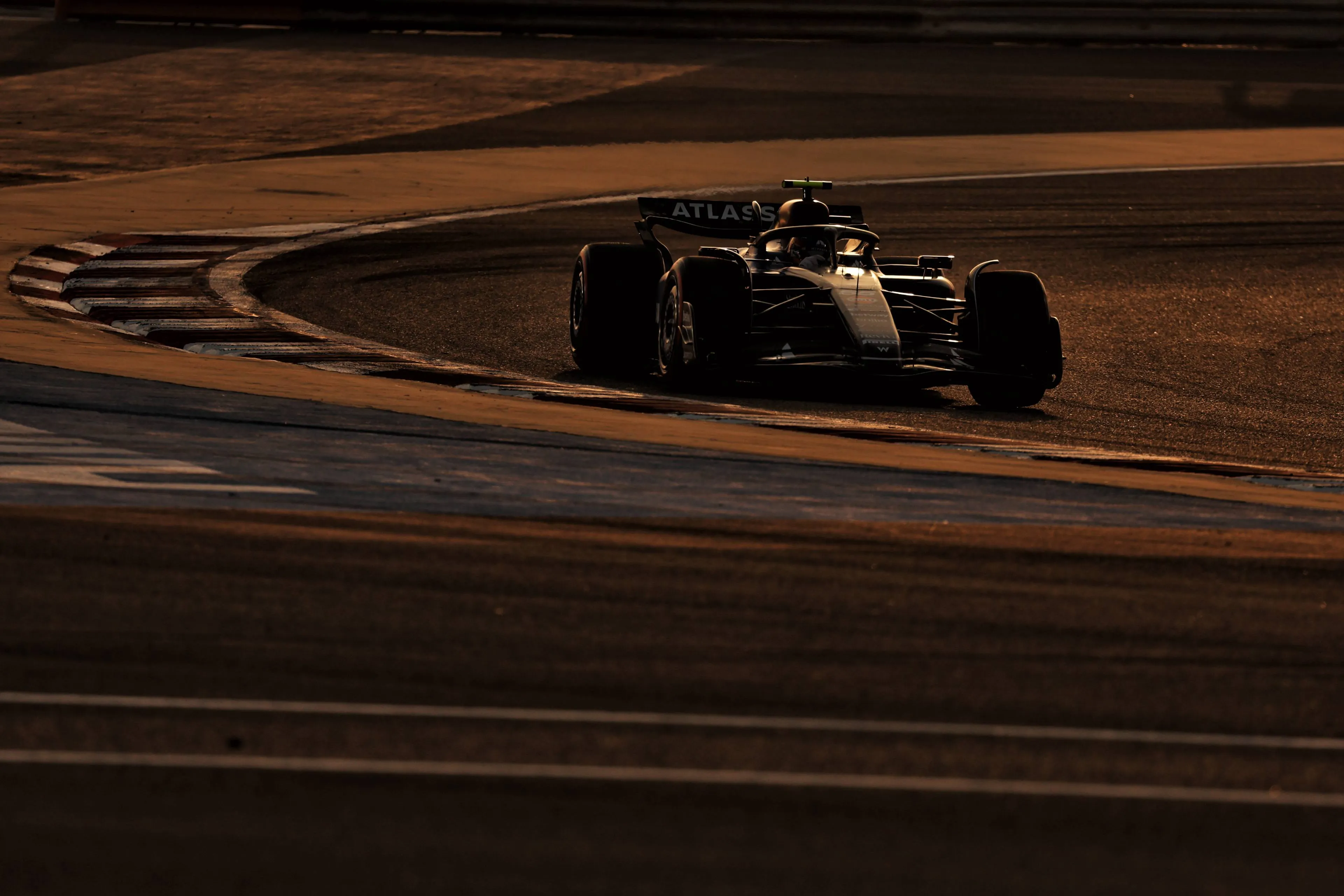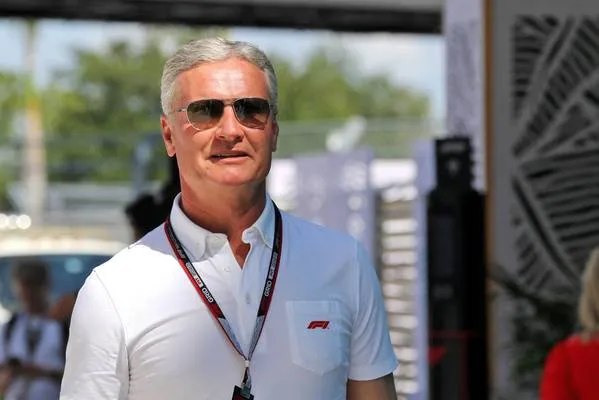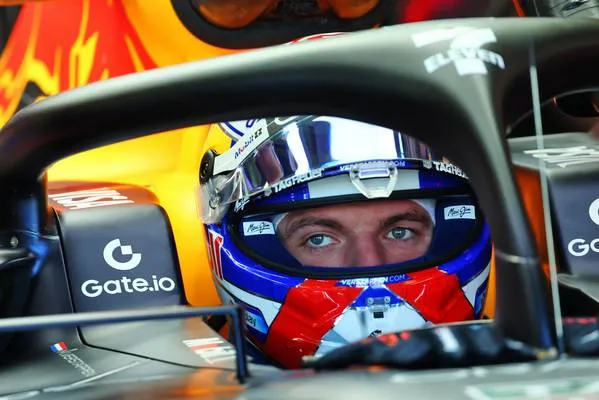Tech Analysis | Unlocking the secrets of McLaren's "magic" Baku rear wing
11:00, 16 Sep 2024
20 Comments
The Azerbaijan Grand Prix offered a spectacular race, with close battles between Leclerc, Piastri and Perez for the second stint. The Australian eventually managed to win. During the race, however, the live footage showed that the MCL38’s DRS flap changed its inclination on the straights even when the system was not activated. Could this be the “magic trick” that allows McLaren to use higher downforce rear wings while still having a high top speed?
The physics behind flexible wings
To understand McLaren’s rear wing “magic trick,” it can be helpful to examine composite materials and their properties. The aerodynamic components of an F1 car are made of carbon fibre composites, which are obtained by combining carbon fibre with a resin, such as vinyl ester, to create a composite material with higher performance properties than the individual one.

These materials have been used for decades, not only in F1 but also in the aerospace industry, due to their excellent mechanical performance, lightweight, and design flexibility. Engineers are always trying to exploit these three properties while designing new aerodynamic components: they try to build light elements that can deform under load while still having very good stress resistance.
F1 engineers’ priority is to design front and rear wings that would flex as much as possible under load (at high speeds, on the straights) to reduce drag to the minimum level but that are then able to come back to their “normal” position to provide the maximum amount of downforce under braking and in corners. This trick is made possible thanks to two of the properties just seen: the lightness and the great flexibility of these materials, which can deform under load and then come back to their original position.
But how can the FIA verify these components, and how can they be legal? These components must have enough stiffness to meet the FIA’s static load test requirements (less than 20mm deflection with 100kg applied vertically to one or both ends of the wing). This is where the third property mentioned above comes into play: thanks to their excellent mechanical performance, carbon fibre composites are very resistant when a static force is applied but are very flexible under aerodynamic load. This allows the engineers to design wings that can twist back at the outer edges at high speed while still passing the FIA’s static tests.
Consequently, the performance of the structural components under load is very much at the top of designers’ priority list, as it can provide considerable benefits in terms of performance, even though designing and developing these elements always requires a lot of money.
The MCL38’s “magic trick”
For the first third of the 2024 F1 Championship, McLaren’s MCL38 had very low aero efficiency compared to Red Bull and Ferrari. Still, the situation drastically changed once they introduced new rear wings from Barcelona onwards.
In fact, from the Spanish Grand Prix, the team led by Andrea Stella introduced a new rear wing version on many different occasions (Barcelona, Silverstone, Spa, and Zandvoort), but with a peculiarity: many of these “new rear wings” didn’t show off a new radical design but were instead made of new materials, which led these wings to be much more efficient while still providing similar levels of downforce to the older versions.
This fact was pointed out both by Andrea Stella and Rob Marshall during the Dutch Grand Prix weekend. The team principal explained, "We have upgraded all the rear-wing families. Even the one in Spa was a new wing because it was upgraded around some more modern concepts.” And the technical director pointed out that the new version “is a bit more efficient, should gives us a little bit more downforce with similar level of drag, so we think it’s a good step for us.” (His words were specifically referred to the Zandvoort rear wings spec).
This said, it was only on the 2.2 km straights in Baku that the “modern concepts” Stella was taking about a few races ago were made visible: the live footage showed that the leading edge of the DRS flap raised inline with the load when the system was not activated (red arrow). As shown in the drawing below, at high speeds (and therefore under load), it was possible to notice how this small portion of the DRS flap raised slightly, increasing the space between the mainplane and the mobile flap in that small area, creating a "mini-DRS" effect, even when the system was not activated (blue arrow shows the wing “normal” design).


That happened not only on the main straight but also in all those sections where the aerodynamic load was sufficient to pull back the rear wing and activate this “device,” giving Piastri’s MCL38 a huge advantage when defending from Leclerc behind.
In fact, it was possible to notice how easily Piastri got closer to Leclerc (and eventually passed him) when he entered the DRS zone; on the other hand, the Ferrari driver struggled a lot to get closer to the McLaren in front despite having both the DRS and the tow (he gained only 3.5/4 tenths on a 2.2 km straight!).
This rear wing solution may explain why McLaren usually adopts higher downforce rear wings than their competitors almost every weekend: thanks to the DRS flap's ability to flex and raise a bit under aerodynamic load, they can still have an excellent top speed while having more downforce available. That makes the MCL38 faster in corners and better at tyre management.
In case many of you are wondering, this “magic trick” is legal because the rear wing successfully passed the static tests imposed by the FIA, making it compliant with the technical regulations.
This design inevitably gives the Woking team a clear advantage over their competitors, but this should represent, rather than an occasion for criticism, a reason to celebrate the work done by Andrea Stella and all the engineers at McLaren in finding an innovative solution by acting in the grey area of the regulation, gaining performance as a consequence.
Engineering is also about pushing the boundaries of regulations to find an extra bit of performance that could allow teams to win races.
New upgrades in Singapore?
It’s important to point out that, after yesterday’s victory, McLaren got the lead in the Constructors’ Championship over Red Bull and created a 20-point margin. With seven races remaining, and considering Red Bull's current form, McLaren are slight favourites to win.
A lot will also depend on how Red Bull will react in the next few races, but the Papaya team has all the cards in hand to successfully bring the Constructors’ trophy back to Woking for the first time since 1998.
In this regard, Andrea Stella revealed to GPblog and others that the team is considering bringing more new parts in the next few races, which could add more performance to the MCL38: “We are definitely working on upgrades for this season. We are now finalising this. I don't want to disclose too much in terms of what and when, but we do have a plan to make the car faster. Whether we will be able to do it or not, we will see, because I think we have seen that at this level of development, it's not an easy task to actually change the specification of the car and get it to work as you expect in your development tools. But that's also why we took a bit more time to try and make sure that what we bring to trackside is successful. So, yes, I can confirm that we have some stuff coming for the next races.”

The team principal’s words are proof of the calm inside the team: they are conscious of the risks related to upgrades, and thus, they’re taking all the time they need to really evaluate how much these changes can affect performance and the overall balance of the car before bringing them to the track. In fact, despite having very modern tools and technologies, which guarantee a very good correlation, McLaren stood out from the rival teams in the last two years: despite being in a rush to bring new parts as soon as possible, they were privileged to work patiently, bringing an upgrade only when they were confident it’d have worked.
In conclusion, seeing this “magic” rear wing trick in action in Baku was really interesting. It’ll be even more interesting to see if any other team will try to replicate this idea on their own cars while waiting to see if the new parts expected for the next races will make the MCL38 even quicker.
Read more about:
Popular on GPBlog

1
'Russell could be leading the title race, but Wolff would still sign Verstappen for the future'
1323 times read

2
F1 Tech | How the updates made the SF-25 more balanced
870 times read
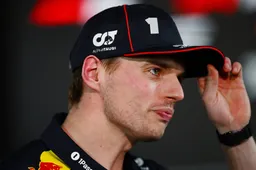
3
Why Verstappen is a top favourite to win the Saudi Arabia GP
705 times read
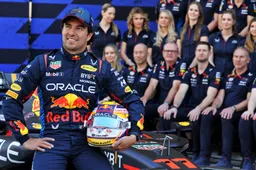
4
Red Bull Racing extends with Perez's personal sponsor
513 times read



